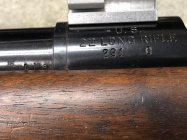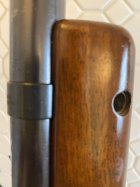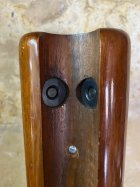When you say thick barrels are you talking RF or CF? and what is thick?
Lee
Just talking for the moment Rimfre, the thinnest barrel I’ll shoot in matches is a factory class Ruger 77/22.
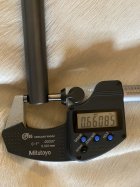
I have one Remington 40-X with a thinner barrel than is typical. It does shoot very well. I have not ascertained whether that is a factory original. It is also shorter than my other 40-X .22’s
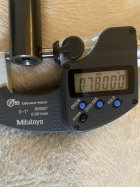
Then there is the “typical” and what I’d call heavy .22 rimfire barrel. This barrel is similar to the heaviest model 52’s.
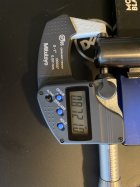
All of these barrels, which wouldn’t be considered exactly “light” on a centerfire rifle, are especially rigid in the application of Rimfre.
I see .22 RF group size as a function of only these things:
1) shot to shot variations in the load (its encompassing meaning);
2) the environment changing;
3) the condition of the interior of the barrel;
4) the rifle moving differently shot to shot;
5) the rifle’s barrel vibrating differently shot to shot.
Take the tunnel tests of Eley and Lapua for example. They virtually eliminate 2&4 (tunnel and mounted action jig).
They consider 3 to be the fixed “given” and inalterable, and try to isolate number 1 with at least most if not all of your free floated barrel touching nothing, necessary to resemble most rifles. Number 1 (which they judge by group size) is going to depend in part on number 5.
Now imagine as a
thought experiment that instead of free floating the barrel, they took a 500 pound 18 inch thick butcher block table as the base to secure 6 barrel vices in row, put some leather in each vice and carefully torqued down your barrel, the action too for good measure.
This would clearly eliminate number 5. To my thinking, your barreled action can never shoot “more transparently” - leaving only the load to speak for itself, than it can when it doesn’t move or vibrate at all. It is difficult to argue against the principle that the most accurate rifle possible - would be a rifled hole through the middle of a huge cube of steel.
What do these analogies have to do with plausible rifles? I think that moving
toward a concept that is intrinsically valid in absolute terms,
some dampening, is better than than no dampening, i.e., free floating.
It’s technically harder to set up the stock to dampen the barrel without overdoing it and stressing parts, than free floating is. And it might not show a benefit on paper at relevant distances of some matches because our barrels have already gotten thick enough to greatly resist resonance. But I believe it is nevertheless a step
in the direction of a valid accuracy ideal.










